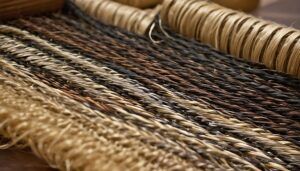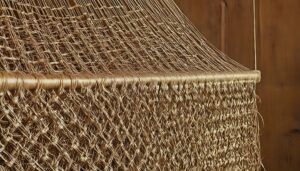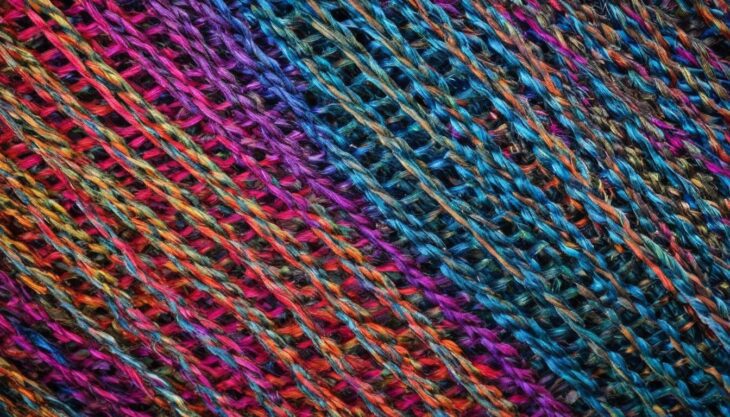In the intricate world of textiles, the interplay between warp and weft threads forms the very foundation of woven fabrics. Let’s delve into the core of this weaving magic, understanding the warp and weft threads, their roles, and the fascinating dynamics that bring them together.
I. Introduction
A. Definition of Warp and Weft Threads
Warp and weft threads are the fundamental components of woven fabrics, working in tandem to create the intricate patterns and structures we see in textiles.
B. Importance in Textiles
Understanding the significance of warp and weft is crucial for appreciating the artistry and functionality of woven materials.
II. Warp Threads
A. Definition and Purpose
Warp threads are the longitudinal yarns in a fabric, running parallel to the selvage. They provide the framework for weaving and determine the fabric’s length.
B. Types of Warp Threads
Exploring the various types of warp threads allows us to grasp the diversity and possibilities they bring to different textile creations.

III. Weft Threads
A. Definition and Role
Weft threads, also known as filling or woof, run horizontally across the fabric, perpendicular to the warp. They play a vital role in creating the fabric’s width.
B. Varieties of Weft Threads
Examining the different materials and techniques used for weft threads showcases the versatility inherent in the weaving process.

IV. Differences Between Warp and Weft
A. Structural Distinctions
Understanding the structural disparities between warp and weft threads contributes to the unique properties of each.
B. Visual Contrasts
The visual impact of warp and weft interactions results in the diverse patterns and designs seen in woven textiles.
V. Significance in Textile Industry
A. Impact on Fabric Strength
The combined strength of warp and weft threads determines the durability and resilience of the woven fabric.
B. Influence on Fabric Appearance
Beyond strength, the arrangement of warp and weft contributes to the aesthetic appeal of textiles.
VI. Weaving Process
A. Basics of Weaving
Grasping the basics of weaving helps us comprehend how warp and weft threads come together to form a cohesive fabric.
B. Interaction of Warp and Weft During Weaving
Examining the intricate dance between warp and weft during the weaving process unveils the artistry involved in textile creation.
VII. Materials Used for Warp and Weft
A. Traditional Materials
Exploring the traditional materials used for warp and weft provides insights into the historical roots of textile production.
B. Modern Alternatives
Innovations in material choices for warp and weft threads reflect the ever-evolving nature of the textile industry.
VIII. Innovation in Warp and Weft
A. Technological Advancements
Technological innovations play a significant role in enhancing the efficiency and possibilities of warp and weft combinations.
B. Sustainable Practices
A growing emphasis on sustainability prompts the exploration of eco-friendly alternatives in warp and weft materials.
IX. Artistic Applications
A. Influence on Textile Design
The interplay of warp and weft threads serves as a canvas for textile artists, influencing the creation of intricate designs.
B. Creative Possibilities
Unleashing creativity through warp and weft opens up a world of possibilities in textile artistry.
X. Challenges and Solutions
A. Common Issues in Warp and Weft
Recognizing challenges in the weaving process allows for proactive solutions to maintain fabric integrity.
B. Strategies to Overcome Challenges
Implementing effective strategies ensures the seamless integration of warp and weft threads despite potential challenges.
XI. Future Trends
A. Emerging Technologies
The future of warp and weft threads is shaped by technological advancements, paving the way for innovative textile solutions.
B. Environmental Considerations
As the textile industry evolves, a focus on environmental considerations becomes integral to the development of warp and weft materials.

XII. How to Choose Warp and Weft Threads
A. Factors to Consider
Guidelines for selecting warp and weft threads assist both professionals and enthusiasts in making informed choices.
B. Tips for Making the Right Choice
Practical tips ensure a smooth decision-making process when it comes to choosing the right warp and weft threads.
XIII. DIY Weaving Projects
A. Simple Weaving Techniques
Embarking on DIY weaving projects becomes accessible with an understanding of simple weaving techniques.
B. Step-by-Step Guide for Beginners
A step-by-step guide encourages beginners to dive into the world of weaving with confidence.
XIV. Maintenance Tips for Woven Fabrics
A. Caring for Warp and Weft
Proper maintenance prolongs the life of woven fabrics, preserving the beauty and functionality of textile creations.
B. Prolonging the Life of Woven Textiles
Practical tips for extending the lifespan of woven textiles ensure their longevity and continued enjoyment.
XV. Conclusion
A. Recap of Warp and Weft Significance
In conclusion, the interwoven tales of warp and weft threads underscore their indispensable roles in the textile landscape.
B. Encouragement for Exploration and Creativity
As we unravel the intricacies of warp and weft, let it inspire you to explore the endless creative possibilities within the realm of textile arts.


[…] in the context of textile production, involves the interlacing of warp and weft threads to create fabric. This age-old craft has been an integral part of human civilization, serving both […]
I have read the article that’s good.
Well done
Nyc
Osm
Amazing broh
I read this article that’s great
I read this article